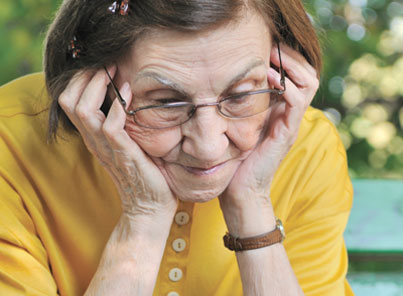U.S. Unprepared to Meet Housing Needs of Aging Population

Study: Urgent Need for Affordable, Accessible Well-Located Senior Housing
The Baby Boomer generation, which consists of approximately 75,820,000 people born between the years 1946 and 1964, is the largest generation of people in modern times. Now, in 2014, as the people of this generation reach ages of 50 to 68 years, it’s becoming clear there’s not enough age-appropriate senior housing available for all of those who will need a senior home in the near future. This situation is not only due to the large boomer population, but also because people are living longer today, due to better health care and healthy lifestyles.
A recent report by the Joint Center for Housing Studies of Harvard University and the AARP Foundation states, “America’s older population is in the midst of unprecedented growth. With the aging of the large baby-boom generation and increased longevity, the 50-and-over population is projected to increase about 20 percent by 2030, to 132 million. In just 15 years, one in five people will be at least aged 65. Ensuring that these older adults have the housing they need to enjoy high-quality, independent, and financially secures lives has thus taken on new urgency not only for individuals and their families, but also for the nation as a whole.”
The report highlights that by 2040, aging baby boomers will push up the population aged 80 and over to 28 million, more than three times the number in 2000. The Health and Human Services Department estimates that nearly 70 percent of people who reach age 65 ultimately will need some form of long-term care.
Some of the issues facing older Americans include high housing costs forcing millions of low-income older adults to sacrifice spending on other necessities including food; most housing lacks basic accessibility features; transportation and pedestrian infrastructure is generally ill-suited to those who do not or cannot drive; and disconnects between housing programs the health care system put many adults with long-term care needs at risk of premature institutionalization.
“The public policy challenges are immense,” says the report, adding that addressing these deficiencies is vital to a national standard of living. “The private and nonprofit sectors also have critical roles to play in developing new housing and care options that support aging in the community.”
The report also addresses the diversity among the United States’ growing older population thanks to the wave of young immigrants who arrived in the United States and recent decades and are now reaching age 50. “With this growing diversity will come significant shifts in housing demand, reflecting the different housing situations and financial circumstances of minorities.”
Homeownership rates also vary widely among ethnicities. Among adults 50 and over, 82 percent of whites own homes, 58 percent of blacks, 62 percent of Hispanics and 70 percent of Asians. There are also regional differences among housing styles and accessibilities. For example, the report notes, in the Northeast many homes are built on multiple levels and do not include a bedroom and bathroom on the first floor while nearly 84 percent of homes in the South provide single-floor living.
The report concludes by saying that various nonprofit and public initiatives are demonstrating the benefits of linking housing with long-term care. The private sector is also developing new housing options, technologies and services in recognition of the potential market for assisting older adults with aging in the community. “A broader conversation, however, is essential to help spread these initiatives so that more older adults can benefit from them,” the report says.
This issue is definitely something for the senior living community and society at large to consider. There’s still time to confront the lack of appropriate senior housing before the challenge become too large to handle.
If you’re presently seeking a senior apartment, independent-living, assisted-living, or other continuing-care community for yourself or a senior loved one, don’t forget to visit alternativesforseniors.com to assist your search.
Alternatives for Seniors is a print and online directory that specifically caters to the housing and personal care concerns of senior citizens and their families since 1992. Call our Senior Specialists at (888) WE-ASSIST (888-932-7747) or visit the Alternatives for Seniors website to begin searching for the perfect home for you or your loved ones. Also, be sure to join our Facebook community and follow us on Twitter.
BLOG Date: Tuesday, September 23, 2014
Writer: Ryan Allen